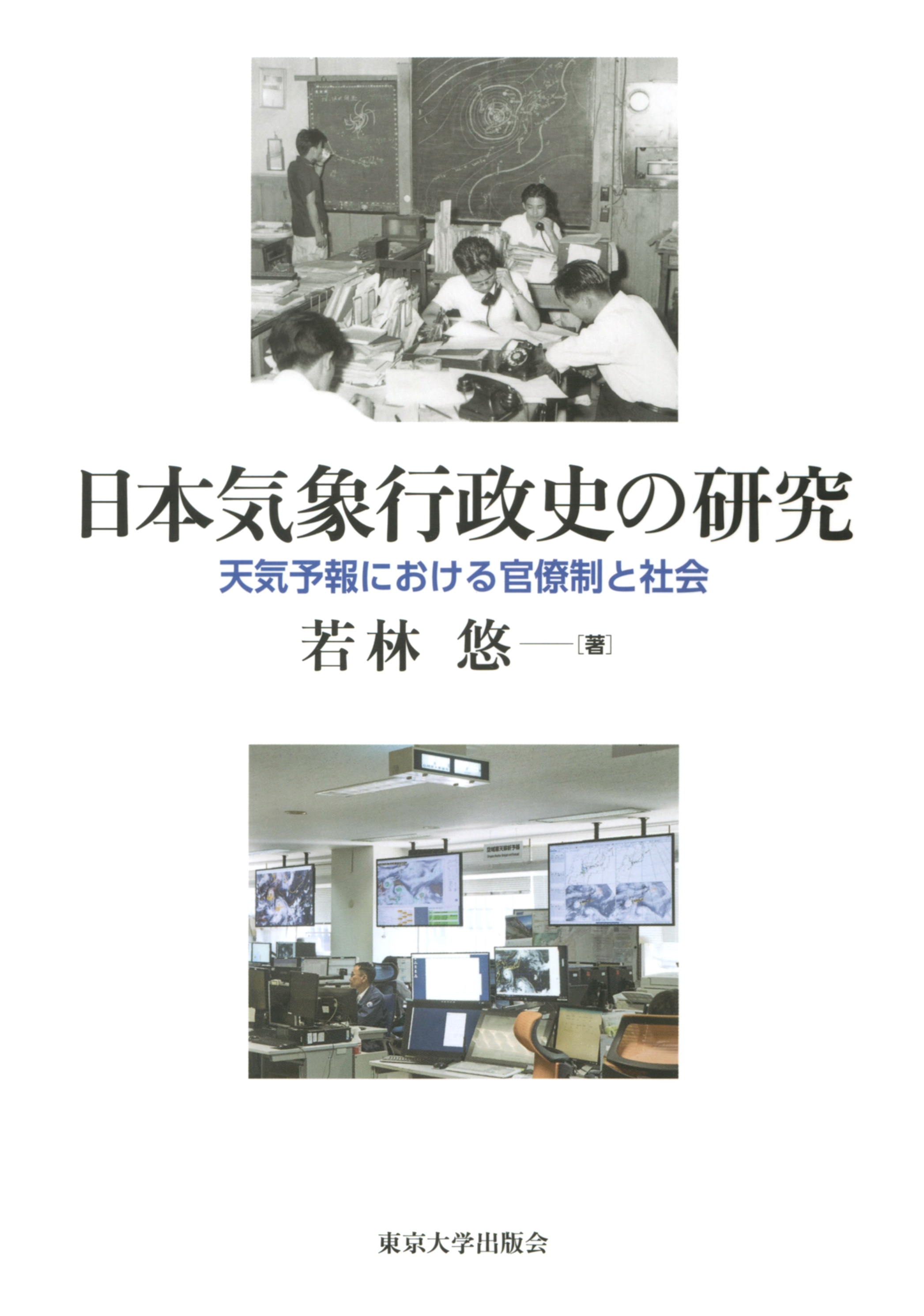
Title
Nihon Kisyo Gyoseishi no Kenkyu (Building Expertise and Reputation - A History of the Japan Meteorological Agency)
Size
384 pages, A5 format
Language
Japanese
Released
March 27, 2019
ISBN
978-4-13-036272-6
Published by
University of Tokyo Press
Book Info
See Book Availability at Library
Japanese Page
This book is an attempt to map the history of the Japan Meteorological Agency(JMA) from the viewpoint of public administration. In textbooks and lectures, public administration often points out how closely administrative activities are related to people's daily lives. However, national weather forecasting has not been fully studied in public administration. Therefore, this book historically reveals its relationship with Japan’s society.
Details of the chapters are as follows, barring the conclusion. Introduction and chapter 1 are theoretical parts, while chapters 2-5 are empirical research on the history of national weather forecasting. Here, the outline in this book is limited to historical parts. Chapter 2 deals with the period from the 1880s to 1945. The Central Meteorological Observatory (renamed JMA in 1956) provided national weather forecasting—it was a public organization, like a laboratory. However, over time, it became a public organization concentrating on performing routine work rather than research, a result of the significant disconnect with society during the war.
Chapter 3 deals with the period from 1945 to the 1950s. The Central Meteorological Observatory recovered its connect with society during the post-war reconstruction—it was trying to gain social support through a new technology called numerical forecast. Chapter 4 covers the period from the late 1950s to the 1980s. The JMA worked on technological development to support objective weather forecasting. Through the development of technologies such as meteorological satellite, weather forecasting performance was enhanced around the 1980s.
Chapter 5 spans the period from the 1980s to the 2000s. In the 1990s, deregulation reforms were made to national weather forecasting. This also caused some tension between the public and private sectors over the provision of disaster prevention weather information. After the reforms, JMA emphasized disaster prevention as its mission, thus resolving the tension through “administrative guidance”. Nowadays, it continues to seek to build a proper public-private relationship.
JMA is considered to be an organization that takes the lead in providing disaster prevention information. In fact, every time a natural disaster, such as torrential rain or typhoon, occurs, we see agency staff on the news, relaying warnings and advisories. In modern Japan, JMA’s role is becoming increasingly important, so we need to know more about this organization. I hope this book provides sufficient details to understand JMA.
(Written by: WAKABAYASHI Yu / September 14, 2020)
Related Info
The 24th Public Policy Studies Association JAPAN Award (June 6, 2020)
http://www.ppsa.jp/prize.html




 eBook
eBook